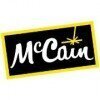QC Analyst
20+ QC Analyst Interview Questions and Answers
Asked in Canton Laboratories

Q. What is ph all basic acid and basic mw and density formula normality Basic reaction
The pH scale measures the acidity or basicity of a substance. It ranges from 0 to 14, with 7 being neutral.
pH measures the concentration of hydrogen ions in a solution
Acids have a pH less than 7, while bases have a pH greater than 7
The molecular weight (MW) of a substance is the sum of the atomic weights of its atoms
Density is the mass of a substance per unit volume
Normality is a measure of concentration in chemical solutions
Basic reactions involve the transfer of protons (H+...read more

Asked in Symed Labs

Q. What is the reason for using DST and Methanol in KF titration?
DST is used to break down the sample matrix and release water for titration, while Methanol is used as a solvent for the sample.
DST (Di Sodium Tartrate) is used to break down the sample matrix and release water molecules for titration.
Methanol is used as a solvent to dissolve the sample and ensure accurate titration results.
Both DST and Methanol help in ensuring precise and reliable Karl Fischer titration results.
QC Analyst Interview Questions and Answers for Freshers

Asked in Symed Labs

Q. What. Is the range of UV , make and principle ?How to do UV Calibration with briefly?
UV range is 190-400 nm, common makes include Agilent and Shimadzu, principle is based on absorption of UV light. UV calibration involves using standard solutions and adjusting wavelength and absorbance.
UV range typically falls between 190-400 nm
Common makes of UV instruments include Agilent and Shimadzu
Principle of UV analysis is based on the absorption of UV light by the sample
UV calibration involves using standard solutions of known concentrations
Calibration includes adjust...read more

Asked in Symed Labs

Q. How to identify functional group in IR spectroscopy and make also
Functional groups in IR spectroscopy can be identified by analyzing characteristic peaks in the spectrum and comparing them to reference data.
Identify the presence of functional groups by looking for specific peaks in the IR spectrum
Use reference tables or databases to match the observed peaks with known functional groups
Look for characteristic peaks such as C=O stretch for carbonyl groups, O-H stretch for alcohols, and N-H stretch for amines
Consider the intensity and positio...read more

Asked in Symed Labs

Q. What chemicals are used in melting point calibration, and what are their ranges?
Chemicals commonly used in melting point calibration include naphthalene, benzophenone, and biphenyl.
Naphthalene is commonly used as a primary standard for melting point calibration.
Benzophenone is used as a secondary standard for melting point calibration.
Biphenyl is another common chemical used for melting point calibration.
Mixtures of these chemicals can also be used to create calibration standards with specific melting point ranges.

Asked in Symed Labs

Q. What are the chemical in KF Reagent solutions like formation and make also
KF Reagent solutions contain chemicals like methanol, sulfur dioxide, and iodine in specific ratios for accurate moisture determination.
KF Reagent solutions typically contain methanol as a solvent
Sulfur dioxide is added to prevent side reactions
Iodine is the titrant used in the Karl Fischer titration method
The chemicals in KF Reagent solutions are carefully balanced to ensure accurate moisture determination
QC Analyst Jobs




Asked in Pharmaffiliates Analytics Synthetics

Q. What is chemistry ..what is inorganic,what is analytical..etc
Chemistry is the study of matter and its properties. Inorganic chemistry deals with non-living matter while analytical chemistry focuses on the analysis of substances.
Chemistry is the scientific study of matter, its properties, and how it interacts with other matter.
Inorganic chemistry deals with the study of non-living matter such as minerals, metals, and chemicals.
Analytical chemistry focuses on the analysis of substances to determine their composition, structure, and prope...read more

Asked in Symed Labs

Q. Explain about calibration of polarimeter and why are using sucrose
Calibration of polarimeter is essential for accurate measurements. Sucrose is commonly used as it has a known specific rotation.
Calibration of polarimeter involves adjusting the instrument to ensure accurate readings.
Sucrose is often used for calibration as it has a well-known specific rotation value.
By calibrating the polarimeter with sucrose, the instrument can accurately measure the specific rotation of other substances.
Regular calibration ensures the reliability and accur...read more
Share interview questions and help millions of jobseekers 🌟


Asked in Symed Labs

Q. What type of pH meter do you use, and can you explain its calibration process?
I use a pH meter for testing and calibrate it regularly to ensure accurate results.
I use a pH meter to measure the acidity or alkalinity of a solution.
Calibration involves adjusting the pH meter to ensure accurate readings.
I calibrate the pH meter using buffer solutions of known pH levels.
Regular calibration is important to maintain the accuracy of the pH meter.
Examples of buffer solutions used for calibration include pH 4.01, 7.00, and 10.01 solutions.

Asked in Symed Labs

Q. Why are using muffler furnace with Range Why are using H2SO4
Muffler furnace is used for controlled heating and H2SO4 is used for acid digestion in analytical testing.
Muffler furnace provides controlled heating for accurate analysis of samples
H2SO4 is used for acid digestion to break down samples for analysis
Both tools are essential for accurate and precise analytical testing

Asked in ICPA Health Products

Q. Please walk me through your CV.
I have experience as a QC Analyst in the medical field.
Worked as a QC Analyst for 3 years at XYZ Pharmaceuticals
Performed analytical testing on pharmaceutical products
Conducted quality control checks to ensure compliance with regulations
Developed and validated analytical methods
Prepared and reviewed documentation, including SOPs and test reports
Asked in Nootan Pharmaceuticals

Q. What do you know about instruments?
Instruments are tools or devices used for measuring, analyzing, or controlling a process or system.
Instruments can be used in various industries such as healthcare, manufacturing, and research.
Examples of instruments include spectrophotometers, chromatographs, and pH meters.
Instruments are calibrated regularly to ensure accuracy and reliability of measurements.
Some instruments are automated, while others require manual operation.
Proper maintenance and handling of instruments ...read more

Asked in Giltfree

Q. What do you mean by QC?
QC stands for Quality Control, which is a process used to ensure that products meet specific quality standards.
QC involves monitoring and testing products to ensure they meet quality standards
It helps identify defects or deviations from specifications
QC can involve sampling, testing, and inspection of products
Examples include checking the dimensions of a manufactured part, testing the purity of a drug, or inspecting the packaging of a food product

Asked in Maveric Systems

Q. How do you write test cases?
Test cases should be written in a structured and organized manner to ensure comprehensive testing.
Identify the requirements and objectives of the software
Create a test plan outlining the scope and approach
Write test cases that cover all possible scenarios and edge cases
Ensure each test case is clear, concise, and unambiguous
Include preconditions, steps, and expected results for each test case
Execute the test cases and record the results
Review and refine the test cases as nece...read more

Asked in Aurobindo Pharma

Q. Is CH3COOH a weak acid or a strong acid?
Ch3COOH, or acetic acid, is a weak acid that partially dissociates in water, making it less potent than strong acids.
Acetic acid (CH3COOH) is commonly found in vinegar.
Weak acids like acetic acid only partially ionize in solution.
In contrast, strong acids like hydrochloric acid (HCl) fully dissociate in water.
The pH of a weak acid solution is higher than that of a strong acid at the same concentration.

Asked in Aurobindo Pharma

Q. Is formic acid a weak or strong acid?
Formic acid is a weak acid, partially dissociating in solution, making it less potent than strong acids like hydrochloric acid.
Formic acid (HCOOH) has a pKa of about 3.75, indicating it is a weak acid.
Weak acids only partially ionize in solution; for example, acetic acid is another weak acid.
In contrast, strong acids like sulfuric acid fully dissociate in water.

Asked in Aurobindo Pharma

Q. Is phenol a weak acid or a strong acid?
Phenol is considered a weak acid due to its limited dissociation in water compared to strong acids.
Phenol (C6H5OH) partially dissociates in water, releasing H+ ions.
Its pKa value is around 10, indicating it is weaker than strong acids like HCl (pKa ≈ -7).
In comparison, acetic acid (CH3COOH) is also a weak acid with a pKa of about 4.76.
Phenol can act as both an acid and a base, showcasing amphoteric properties.

Asked in Lupin

Q. What does GMP stand for?
GMP stands for Good Manufacturing Practice.
GMP is a set of guidelines that ensure products are consistently produced and controlled according to quality standards.
It is important in industries such as pharmaceuticals, food, and cosmetics.
Examples of GMP requirements include proper documentation, sanitation, and quality control measures.

Asked in IBM

Q. How many types of testing are there?
There are several types of testing including functional, performance, security, usability, and more.
Functional testing ensures that the software meets the specified requirements.
Performance testing checks the system's ability to handle a large number of users or transactions.
Security testing identifies vulnerabilities and ensures that the system is secure.
Usability testing evaluates the user-friendliness of the software.
Other types of testing include compatibility testing, re...read more

Asked in Lupin

Q. What does SOP stand for?
SOP stands for Standard Operating Procedure.
SOP is a set of step-by-step instructions compiled by an organization to help workers carry out routine operations.
It ensures consistency and quality in the performance of tasks.
Examples include SOPs for laboratory testing procedures, manufacturing processes, and safety protocols.

Asked in Symed Labs

Q. Explain self-induction briefly.
I am a dedicated QC Analyst with a strong background in quality control processes and a passion for ensuring product excellence.
Over 5 years of experience in quality control in the manufacturing sector.
Skilled in using various testing methodologies, such as statistical sampling.
Proficient in tools like Six Sigma and Lean methodologies to improve processes.
Experience in conducting audits and inspections to ensure compliance with standards.
Strong analytical skills, demonstrated...read more

Asked in Aurobindo Pharma

Q. Is NaOH a strong base or a weak base?
NaOH, or sodium hydroxide, is classified as a strong base due to its complete dissociation in water.
NaOH dissociates completely in water, releasing OH- ions.
Strong bases have a high pH, typically above 12.
Examples of strong bases include NaOH, KOH, and Ca(OH)2.
Weak bases, like ammonia (NH3), do not fully dissociate in solution.
Asked in Medgel

Q. In process HPLC mobile phase
The mobile phase in process HPLC is a liquid or mixture of liquids that carries the sample through the column.
The mobile phase is typically composed of a solvent or a combination of solvents.
It should be compatible with the sample and the stationary phase in the column.
The mobile phase should have appropriate polarity and viscosity for efficient separation.
Common mobile phase solvents include water, methanol, acetonitrile, and tetrahydrofuran.
The composition and ratio of the ...read more

Asked in Aurobindo Pharma

Q. Is H2SO4 a strong acid or a weak acid?
H2SO4, or sulfuric acid, is a strong acid that completely dissociates in water, making it highly reactive and corrosive.
H2SO4 dissociates completely in aqueous solution, releasing H+ ions.
It is used in various industrial processes, such as fertilizer production.
Sulfuric acid is a key component in lead-acid batteries.
It can cause severe burns and is highly corrosive to metals.

Asked in McCain Foods

Q. Food safety management system
Food safety management system ensures food products are safe for consumption by implementing procedures and controls.
Establishing and maintaining a food safety plan based on HACCP principles
Implementing Good Manufacturing Practices (GMP) to ensure safe food handling
Conducting regular inspections and audits to identify and address potential hazards
Training employees on food safety protocols and procedures
Maintaining proper documentation of all food safety activities

Asked in McCain Foods

Q. HACCP steps and principles
HACCP (Hazard Analysis and Critical Control Points) is a systematic preventive approach to food safety that addresses physical, chemical, and biological hazards.
Identify potential hazards in the food production process
Determine critical control points where hazards can be prevented, eliminated, or reduced to safe levels
Establish critical limits for each control point
Monitor and maintain control of the critical control points
Establish corrective actions to be taken when monito...read more
Interview Questions of Similar Designations
Interview Experiences of Popular Companies








Reviews
Interviews
Salaries
Users
















